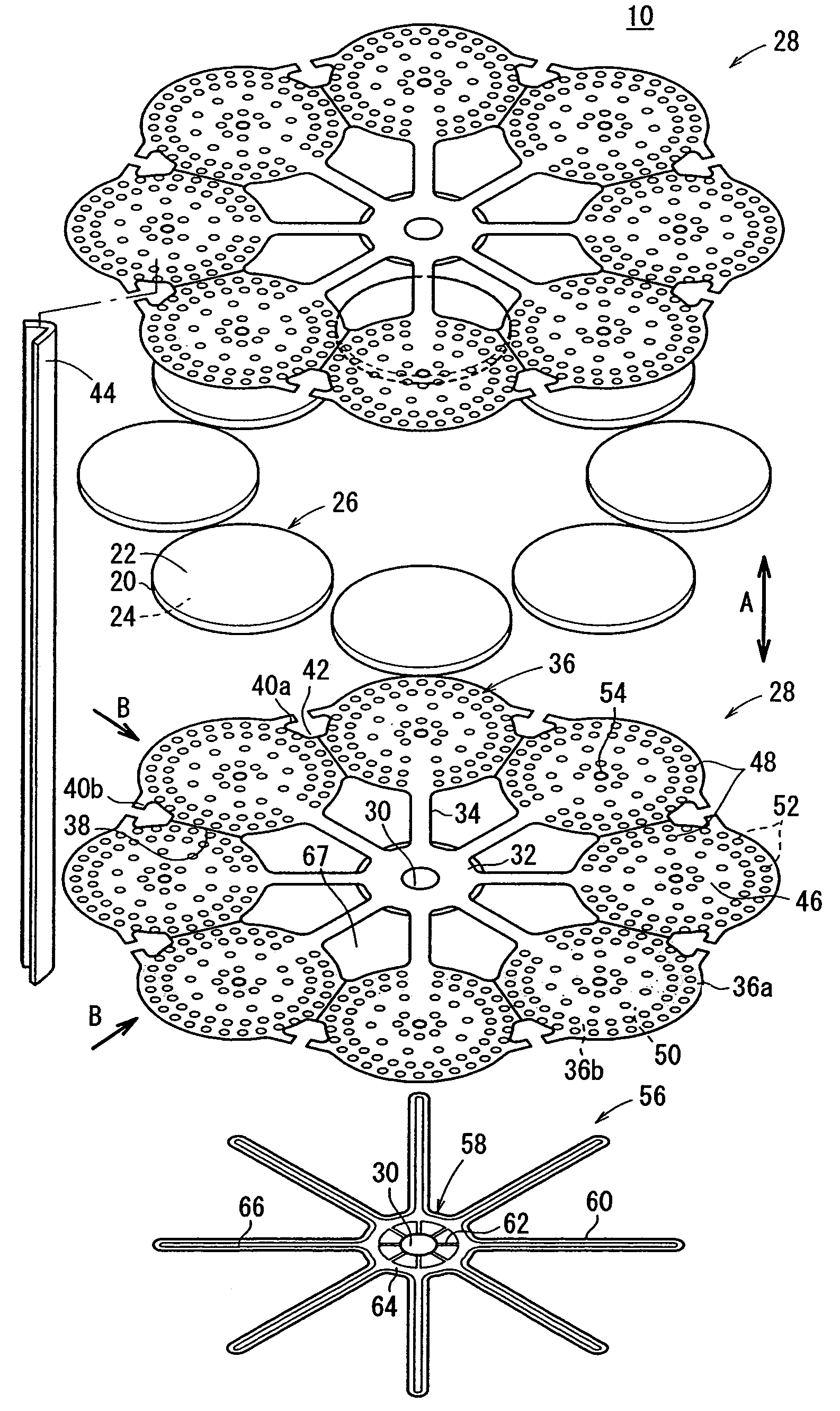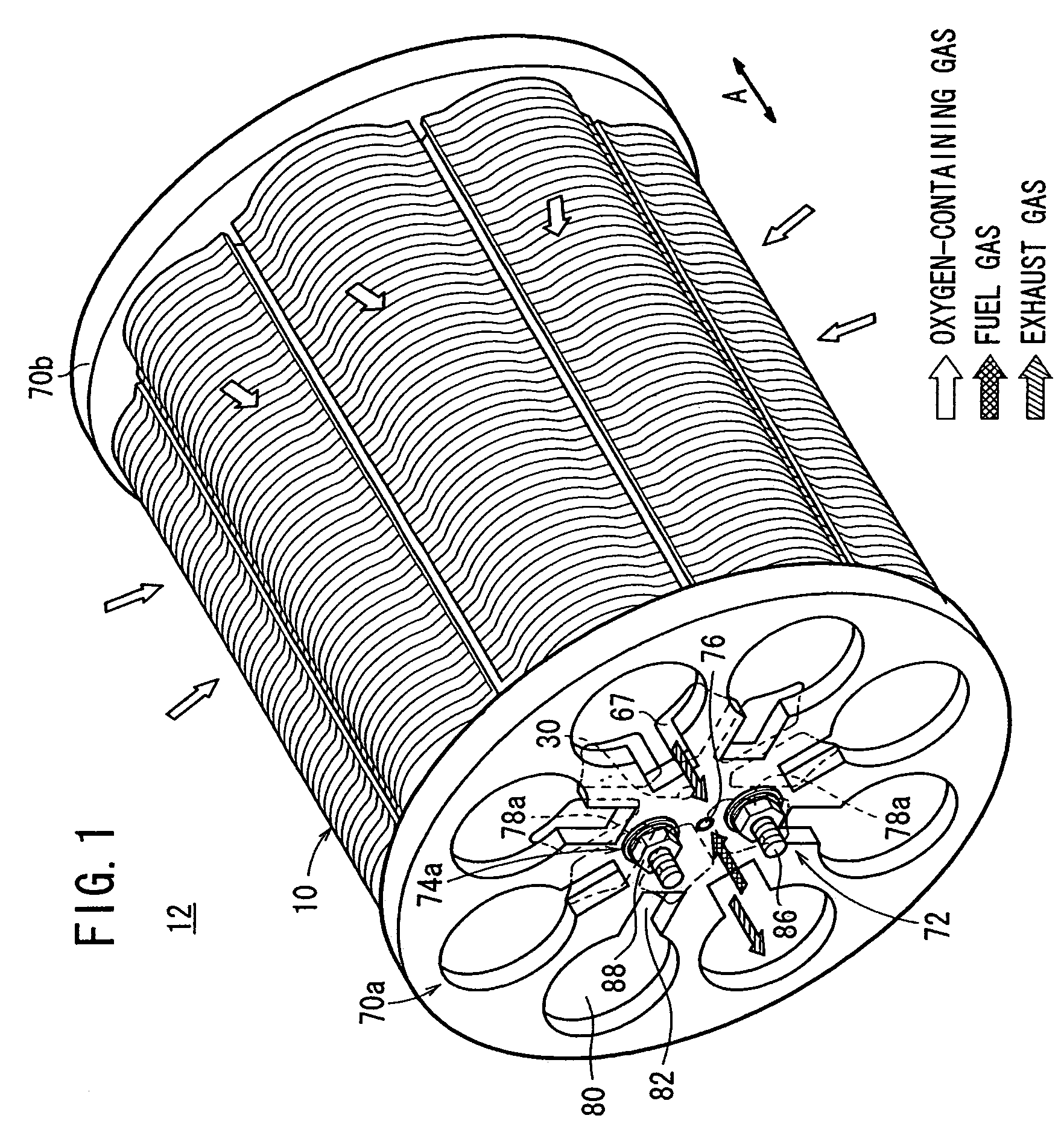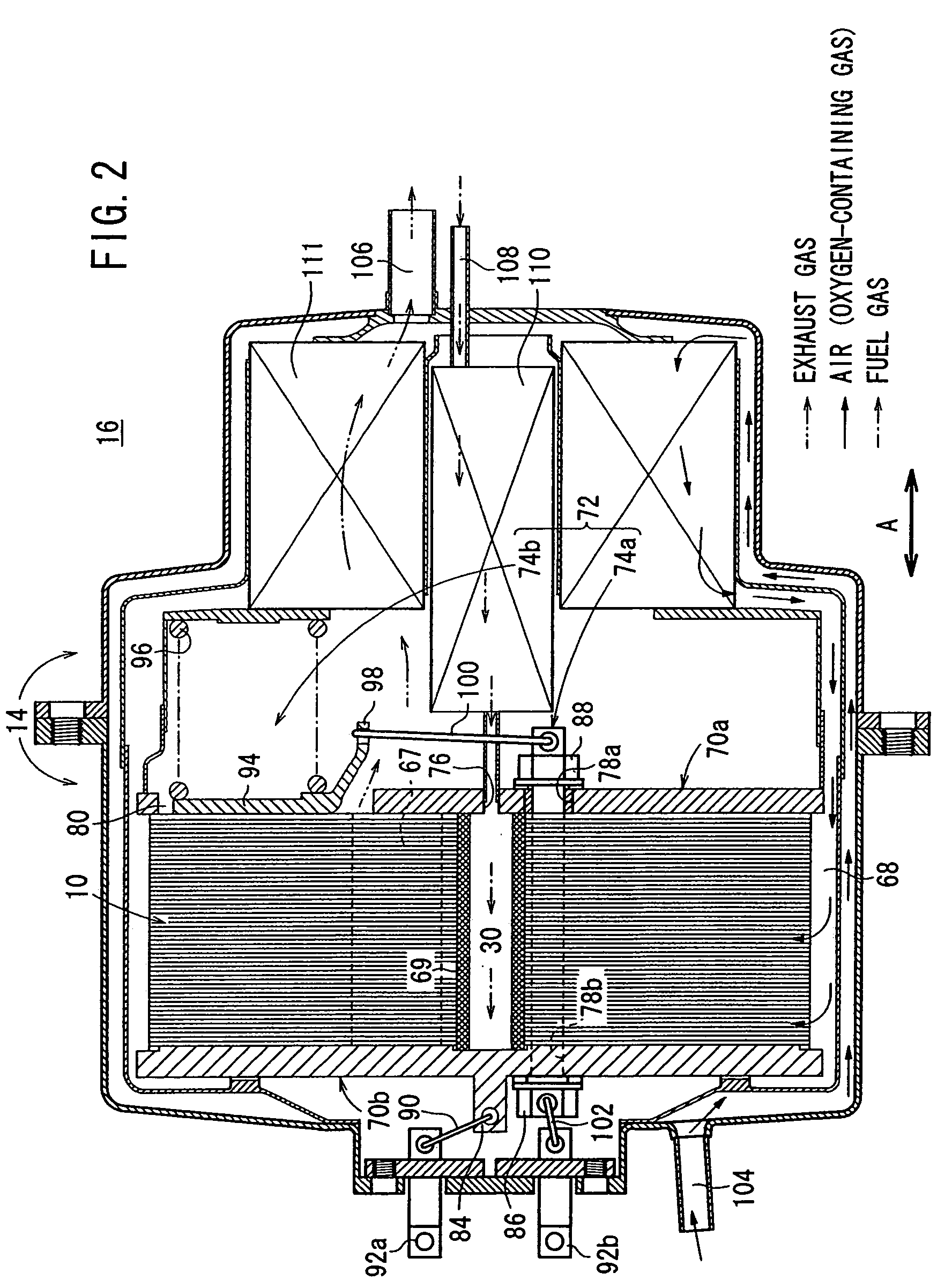Fuel cell
a fuel cell and cell technology, applied in the field of fuel cells, can solve the problems of high cost of fuel cell production, unit cells at the lower positions may be damaged undetectedly, etc., and achieve the effect of simple and compact structur
- Summary
- Abstract
- Description
- Claims
- Application Information
AI Technical Summary
Benefits of technology
Problems solved by technology
Method used
Image
Examples
first embodiment
[0040]FIG. 1 is a perspective view schematically showing a fuel cell stack 12 formed by stacking a plurality of fuel cells 10 according to the present invention indicated by an arrow A. FIG. 2 is a cross sectional view showing part of a fuel cell system 16 in which the fuel cell stack 12 is disposed in a casing 14.
[0041]The fuel cell 10 is a solid oxide fuel cell (SOFC) used in various applications, including stationary and mobile applications. As shown in FIGS. 3 and 4, the fuel cell 10 includes electrolyte electrode assemblies 26. Each of the electrolyte electrode assemblies 26 includes a cathode 22, an anode 24, and an electrolyte (electrolyte plate) 20 interposed between the cathode 22 and the anode 24. For example, the electrolyte 20 is made of ion-conductive solid oxide such as stabilized zirconia. The electrolyte electrode assembly 26 has a circular disk shape. The electrolyte electrode assembly 26 includes a barrier layer at least on its outer circumferential end for prevent...
second embodiment
[0085]In the present invention, the fuel gas supplied to the fuel gas supply passage 30 flows along the fuel gas supply channels 66 between the separator 28 and the channel member 124. Then, the fuel gas flows toward the anodes 24 through the fuel gas inlets 128 formed at the tip ends of the channel member 124.
[0086]In the first and second embodiments, as shown in FIG. 7, the first protrusion 48 has a ring shape perfectly circular (annular shape). Alternatively, for example, as shown in FIG. 15, the first protrusion 48 (recess 53) may have an oval ring shape. In this case, assuming that the intersection of the major diameter “a” and the minor diameter “b” is the center of the first protrusion 48, if an axis extending through the center matches the central axis of the second protrusion 52, “the first and second protrusions 48, 52 are coaxial”.
[0087]In an example shown in FIG. 7, the second protrusion 52 has a conical shape, and a flat surface on its top. The cross section of the seco...
PUM
| Property | Measurement | Unit |
|---|---|---|
| DC electric energy | aaaaa | aaaaa |
| volume | aaaaa | aaaaa |
| size | aaaaa | aaaaa |
Abstract
Description
Claims
Application Information
 Login to View More
Login to View More - R&D
- Intellectual Property
- Life Sciences
- Materials
- Tech Scout
- Unparalleled Data Quality
- Higher Quality Content
- 60% Fewer Hallucinations
Browse by: Latest US Patents, China's latest patents, Technical Efficacy Thesaurus, Application Domain, Technology Topic, Popular Technical Reports.
© 2025 PatSnap. All rights reserved.Legal|Privacy policy|Modern Slavery Act Transparency Statement|Sitemap|About US| Contact US: help@patsnap.com



